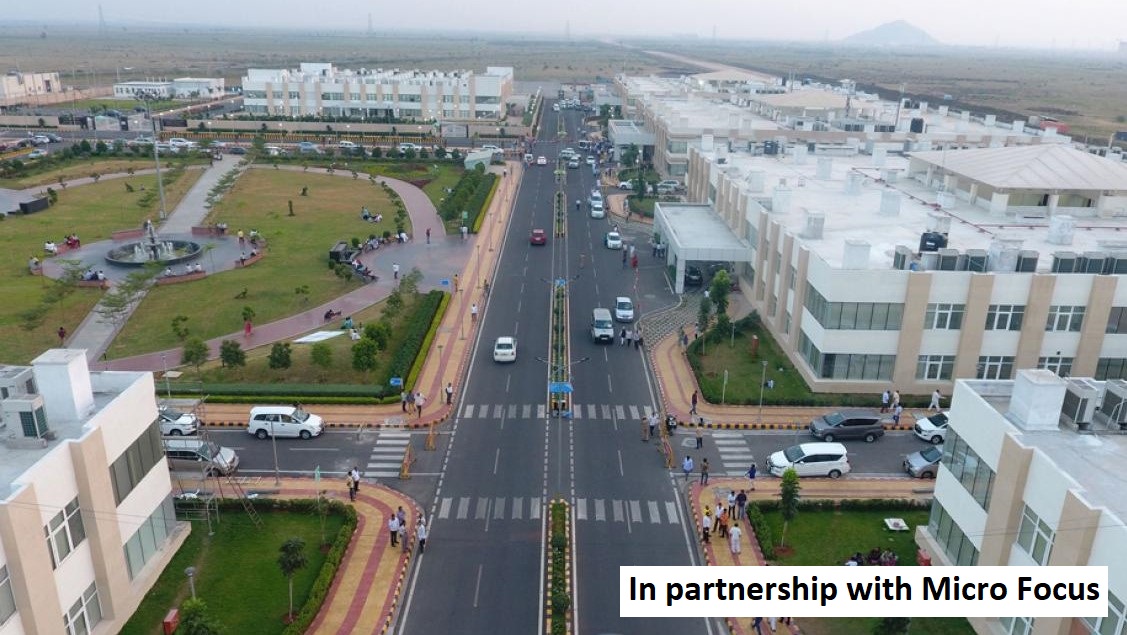In partnership with Micro Focus
Traffic congestion, air and noise pollution, or overcrowded public transport.
These are just a few of the growing pains of a rapidly urbanising Asia, a region which is expected to be home to 64 per cent of the world's urban population by 2050.
As the population grows, technology keeps pace.
City planning, for one thing, continues to experience dramatic growth as a means to achieve sustainability, improve residents' quality of living and propel future development.
From South Korea to Singapore, cities across the region have been shining examples for the smart city movement.
As every Asian country charges ahead to build more of the world's smart cities, the opportunity is clear – being the world's first smart region could be a reality.
What makes a smart city smart?
Each principality in the region defines the smart agenda slightly differently and focuses their efforts on varying aspects, from Internet connectivity to transportation.
Singapore's Digital Government Blueprint, for instance, brings together a strategy and roadmap for utilisation of high-tech infrastructure to digitally integrate city services, even down to electronic payments for government services and self-driving public buses.
For South Korea, wireless connectivity drives their smart city agenda. According to data from the Organisation for Economic Co-operation and Development (OECD), South Korea is the first country in the world to have more things connected to the Internet per habitants. The world's first Smart City can be found in Songdo, where sensors monitor and regulate everything from temperature to energy consumption and traffic.
As for sustainable transport, Shenzhen in China is an early adopter. Shenzhen is the first city in Asia to achieve a 100 per cent all-electric public bus fleet for over 16,000 buses. The local authorities, working together with Huawei, are also planning to launch self-driving bus routes.
While major cities in Asia focus on different aspects of building a smart city, the consolidation of these efforts might become a competitive advantage for the region. Finding ways to consolidate areas, from connected societies to open-data sharing, will drive cooperation and the utilisation of multiple smart solutions.
Making Smart Asia a reality
With this expertise, implementation and know-how, the development of a smarter region could be closer than we think. Here are several ideas to consider that could make Smart Asia a reality:
· Collaboration between and within cities
To solve the challenges of urbanisation, cities across Asia spanning different markets will have to work together, with local city leaders piloting technological collaborations. This process has already started. For example, Singapore has already been working alongside India's government to develop the first smart city of Amaravati. The two countries can continue to share expertise in areas of urban governance and security for a smarter world.
Technology integration also requires broad cooperation across public and private sectors. Public-private partnerships (PPP), such as cooperation between Huawei and Shenzhen local authorities mentioned earlier, could help in building a Smart Asia.
· Overcoming the challenges of smart infrastructure
Smart cities are data-driven and rely heavily on a plethora of technologies - such as Internet Protocol (IP) infrastructure, blockchain-enabled data centres and telecommunication networks.
Over the next few years, advancements in information and communication technologies (ICTs) will continue to challenge the legacy urban infrastructure still present across Asia.
Building sustainable infrastructure that will be able to bridge legacy systems with new technologies will help drive a smarter Asia.
Increased connectivity and interdependencies of a Smart City's systems need to co-exist with security considerations.
As the Internet of Things (IoT) is increasingly a part of everyday life, individuals, businesses and lawmakers across the region should collaborate and define basic security standards that guide new devices.
In the past few months, we have heard how IoT devices are becoming the cyber weapon of choice for criminals, posing serious threats to a city's security.
By combining knowledge, experience and expertise, different countries across Asia will be able to establish security standards that everyone can trust, develop consolidated innovative solutions and hopefully stop the hackers before another global attack occurs.
· People remain at the forefront of cities
Smart City strategies start with people, and Smart Asia could also rise to meet the challenges of the region's melting pot, providing healthy ecosystems that impact their citizens' quality of lives positively.
The citizen-centred concept of public-private-people partnerships (PPPPs) allows people to become active stakeholders in the process of planning, testing, implementing and evaluating urban policies.
The idea of co-creation comes into play here. Sustainable growth can be promoted by engaging citizens to co-create as stakeholders, providing improvements and best practices.
In turn, municipal organisations can utilise public open data to develop and deliver city services or host crowdsourcing projects to better spearhead regional initiatives.
It could also have other benefits, from lowering barriers of entry for entrepreneurs and businesses from different markets, and ultimately boost innovation and increase the uptake of technological solutions, both locally and regionally.
· The time for a Smart Asia is now
To create a sustainable living space for 6.4 billion people is no easy feat, but cities in Asia can continue to bring the smart region to life. Just like how the various regional cooperation and integration programmes, there is a potential to drive the world's first smart region, which could even be replicated across other regions globally.
With challenges come opportunities. This is just the beginning, and we could be well on the way to achieving the Smart Asia dream, where cities, while separated by physical borders, collaborate through having smarter, digitally-connected communities.
Stephen McNulty is President, Asia-Pacific, at Micro Focus.









